Forums
- Forums
- Duggy's Reference Hangar
- RAF Library
- Hawker Henley/Hotspur
Hawker Henley/Hotspur
Post a reply
- Go to Previous topic
- Go to Next topic
- Go to Welcome
- Go to Introduce Yourself
- Go to General Discussion
- Go to Screenshots, Images and Videos
- Go to Off topic
- Go to Works in Progress
- Go to Skinning Tips / Tutorials
- Go to Skin Requests
- Go to IJAAF Library
- Go to Luftwaffe Library
- Go to RAF Library
- Go to USAAF / USN Library
- Go to Misc Library
- Go to The Ops Room
- Go to Made in Germany
- Go to Campaigns and Missions
- Go to Works in Progress
- Go to Juri's Air-Raid Shelter
- Go to Campaigns and Missions
- Go to Works in Progress
- Go to Skinpacks
- Go to External Projects Discussion
- Go to Books & Resources
-
5 years agoSat Sep 25 2021, 01:38pmDuggy
 Main AdminThe Hawker Henley was a British two-seat target tug derived from the Hawker Hurricane that was operated by the Royal Air Force during the Second World War.
Main AdminThe Hawker Henley was a British two-seat target tug derived from the Hawker Hurricane that was operated by the Royal Air Force during the Second World War.
Design and development
In 1934 Air Ministry Specification P.4/34 was issued which called for a light bomber that could also be deployed in a close-support role as a dive-bomber.
Fairey, Gloster and Hawker attempted to fulfil this need and competition was tight to attain the highest performance possible. As the aircraft required only a modest bomb load and with performance being paramount, the Hawker design team chose to focus its efforts on developing an aircraft similar in size to their Hurricane fighter.
The Hurricane was then in an advanced design stage and there would be economies of scale if some assemblies were common to both aircraft. This resulted in the Henley, as it was to become known, sharing identical outer wing panel and tailplane jigs with the Hurricane. Both were equipped with the Rolls-Royce Merlin engine as it offered the best power-weight ratio as well as a minimal frontal area. The Henley's cantilever fabric-covered monoplane wing was mid-set, a retractable tail wheel landing gear was selected and accommodation provided for a pilot and observer/air gunner, which differed from the Hurricane's single-seat cockpit.
Although construction of a Henley prototype began as early as mid-1935, with priority given to Hurricane development, it was not until 10 March 1937 that, powered by a Merlin "F" engine, it was first flown at Brooklands, shortly after the competing Fairey P.4/34. Subsequently, the aircraft was refitted with light alloy stressed-skin wings and a Merlin I engine (production version of the F) and further test flights confirmed the excellence of its performance. It could reach a top speed of 300 mph (480 km/h).
However, at this point the Air Ministry had by this point decided that it no longer required a light bomber (probably because this role was felt to be adequately filled by the Fairey Battle). Accordingly, the Henley, which in line with RAF policy had not been fitted with dive brakes; bomb crutches; or specialised bomb sights and thus limited to attack angles of no greater than 70? (and consequently far less accurate than specialised German dive bombers of the same period, notably the Ju 87 Stuka, fitted with all of the foregoing and a semi-automatic bomb release and dive termination system and thus capable of near-vertical dives of pin-point accuracy) was relegated to target-towing duty.
Henley production was subcontracted to Gloster Aircraft and 200 were ordered into production.
The second prototype was fitted with a propeller-driven winch to haul in drogue cable after air-to-air firing sorties. This was first flown on 26 May 1938.
Operational history.
Production Henley III aircraft, entered service with Nos. 1, 5 and 10 Bombing and Gunnery Schools, as well as with the Air Gunnery Schools at Barrow, Millom and Squires Gate. Unfortunately, it was soon discovered that unless the aircraft were restricted to an unrealistically low towing speed of 220 mph (350 km/h), the rate of engine failures was unacceptably high, attributed to a cooling system matched to the Henley's original missions but inadequate when towing a target at high engine speed but low airspeed. Henleys were relegated to towing larger drogue targets with anti-aircraft co-operation units, predictably proving themselves even less well-suited to this role; the number of engine failures increased and problems with engines were compounded by difficulties releasing drogue targets. Several Henleys were lost after the engine cut out and the drogue could not be released quickly enough. A solution was never found to this problem and in mid-1942, the Henley was withdrawn from service, in favour of adapted Boulton Paul Defiants and specialised Miles Martinet aircraft.
Variants
Henley I
Prototype.
Henley II
Second prototype.
Henley III
Two-seat target tug aircraft for the RAF, 200 built.
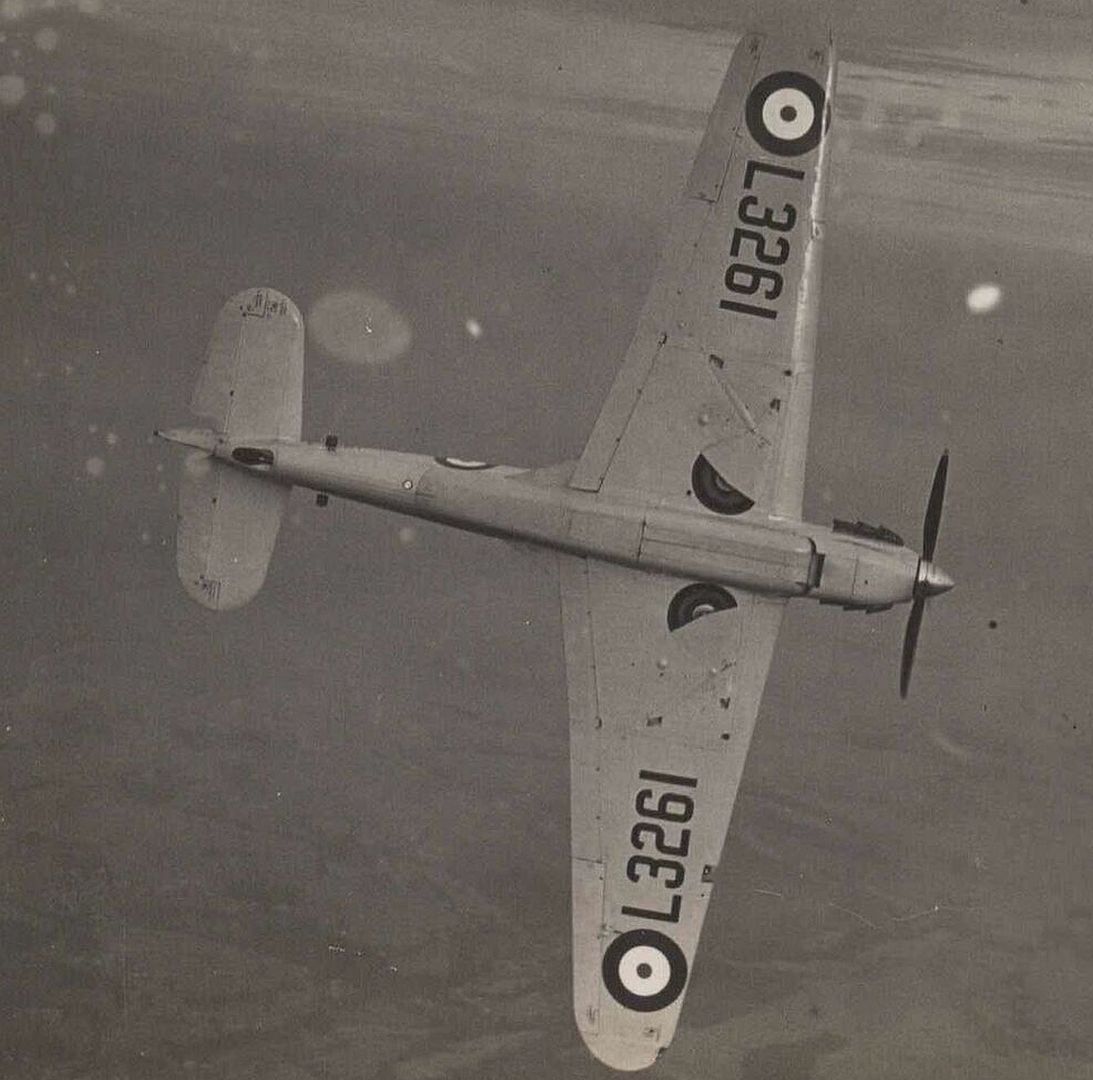

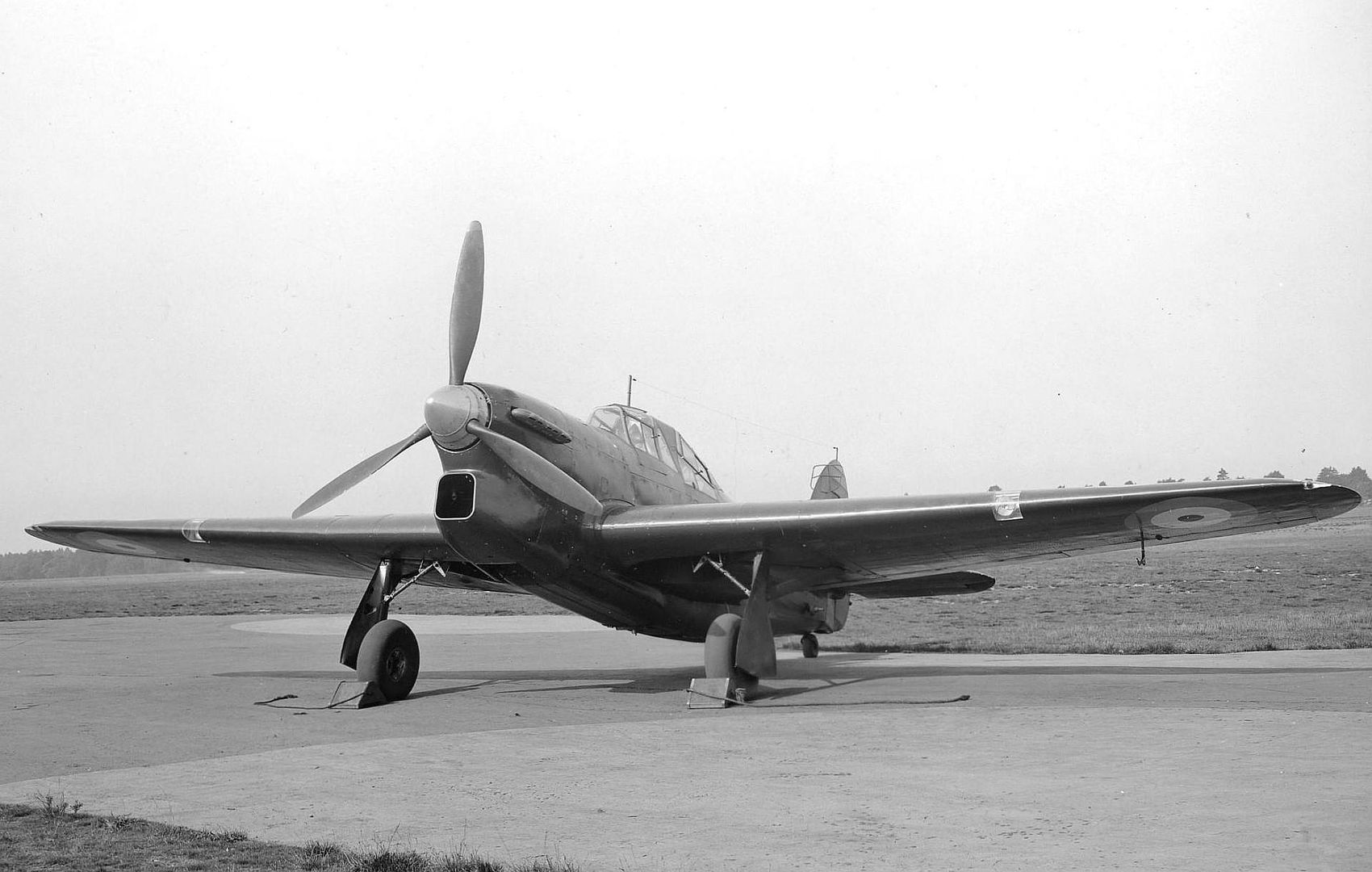
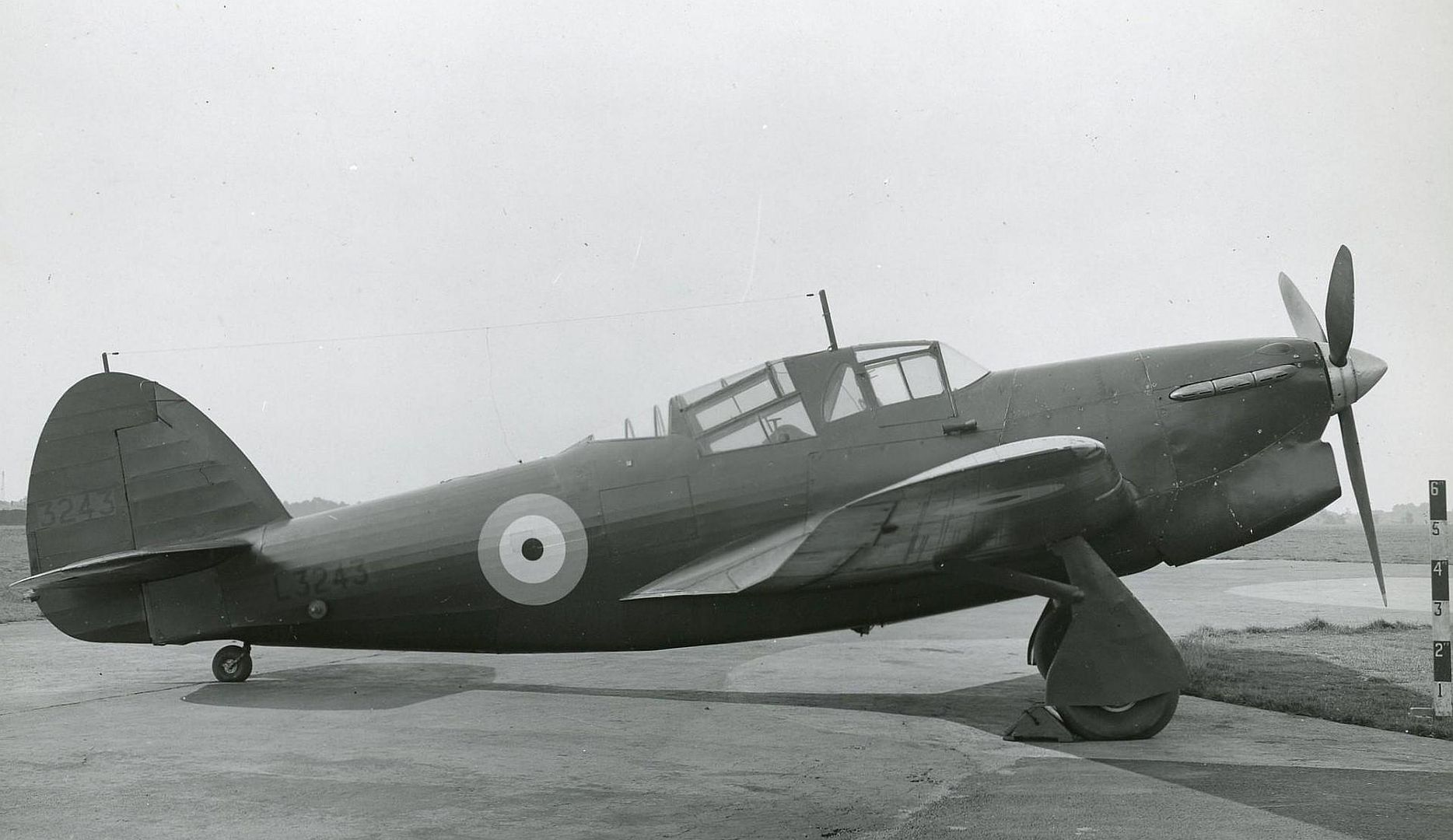
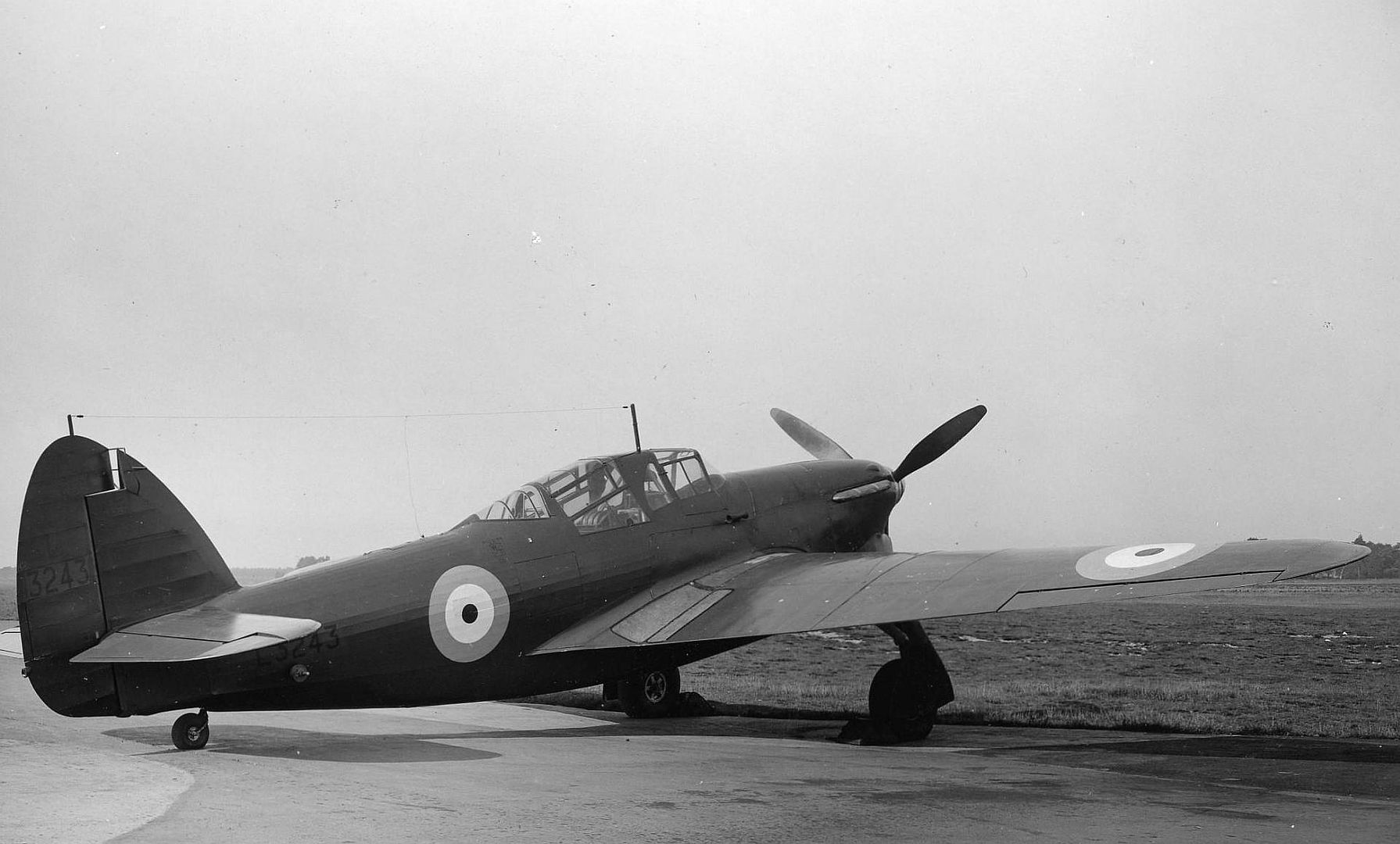
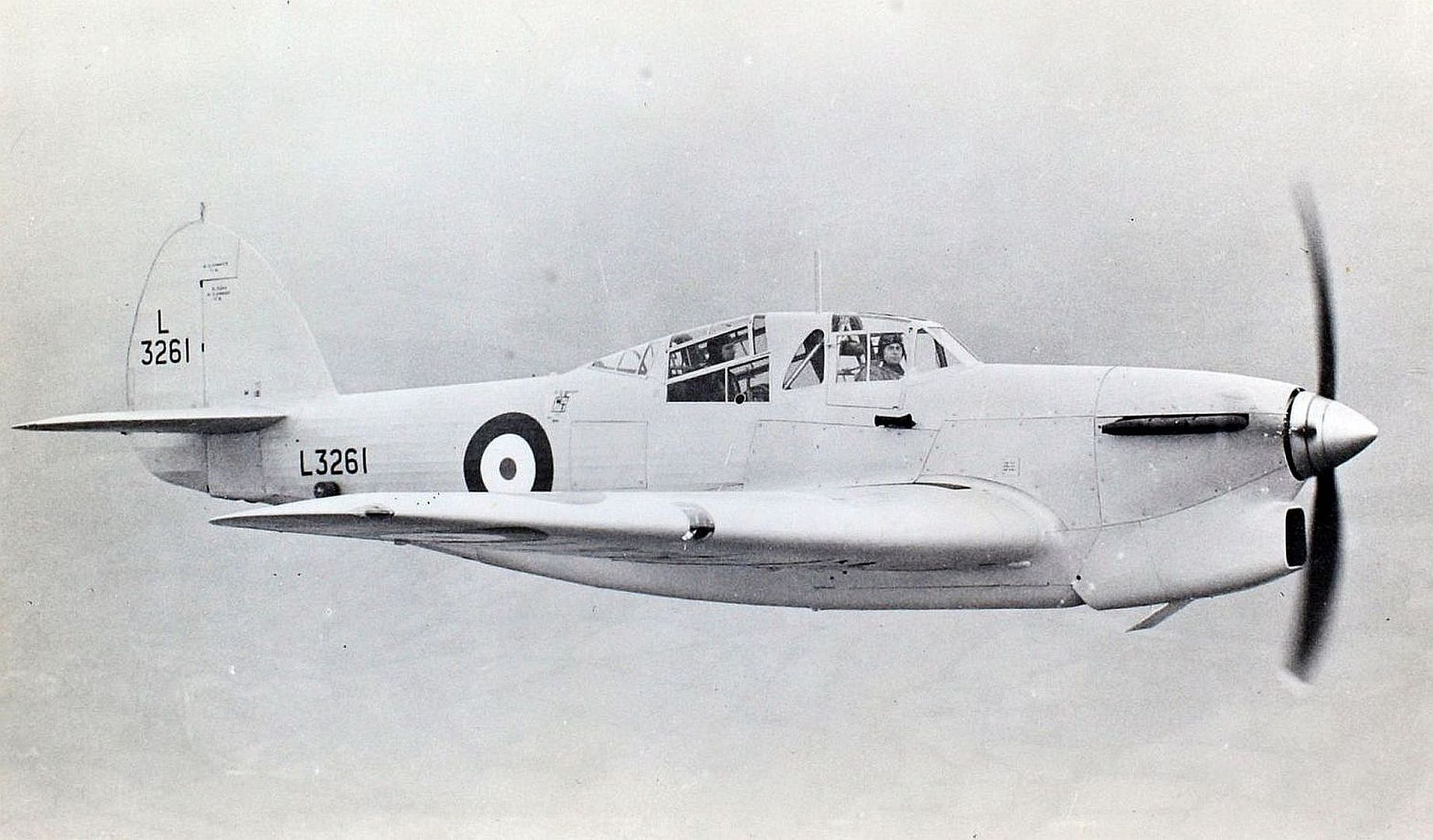
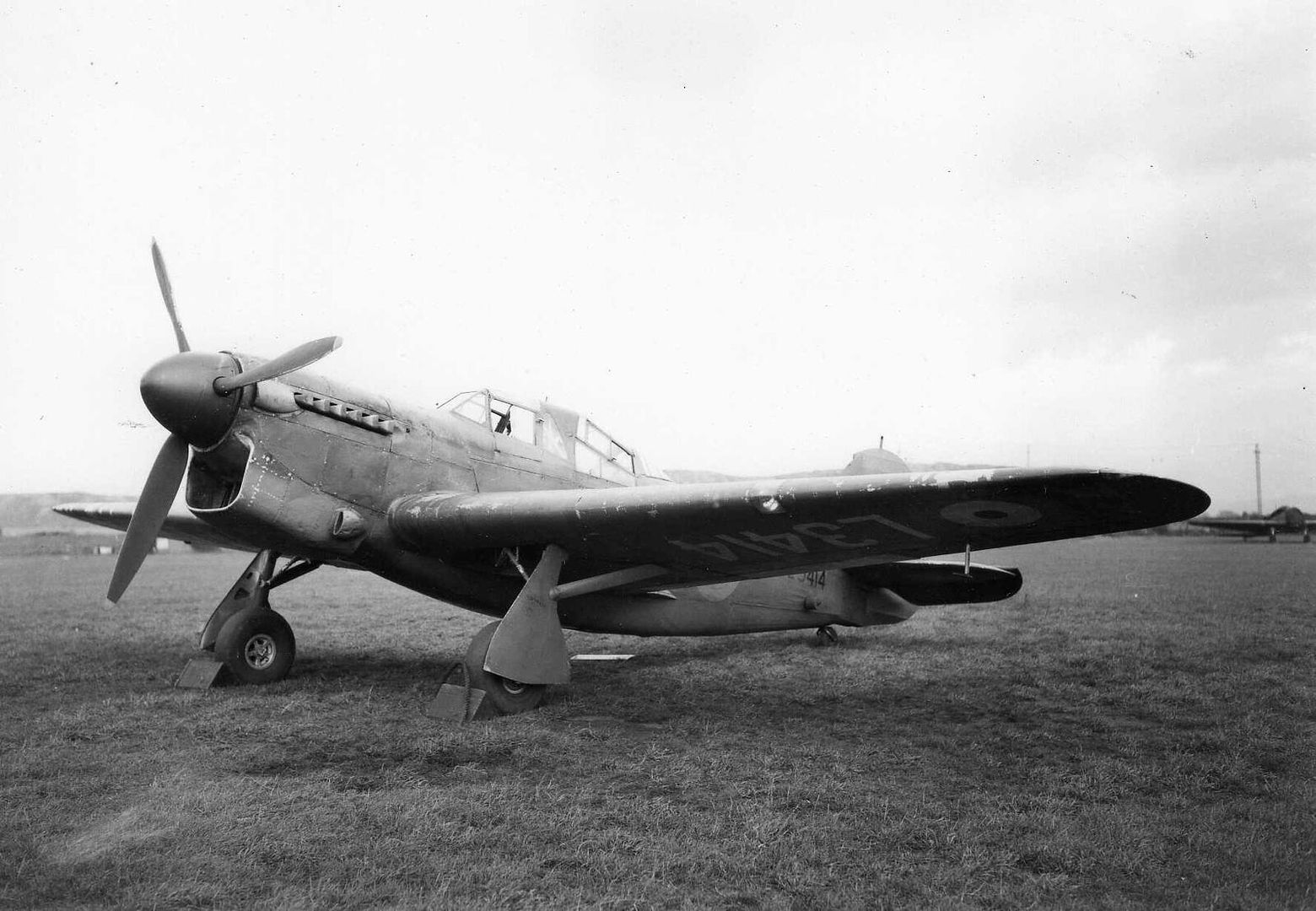
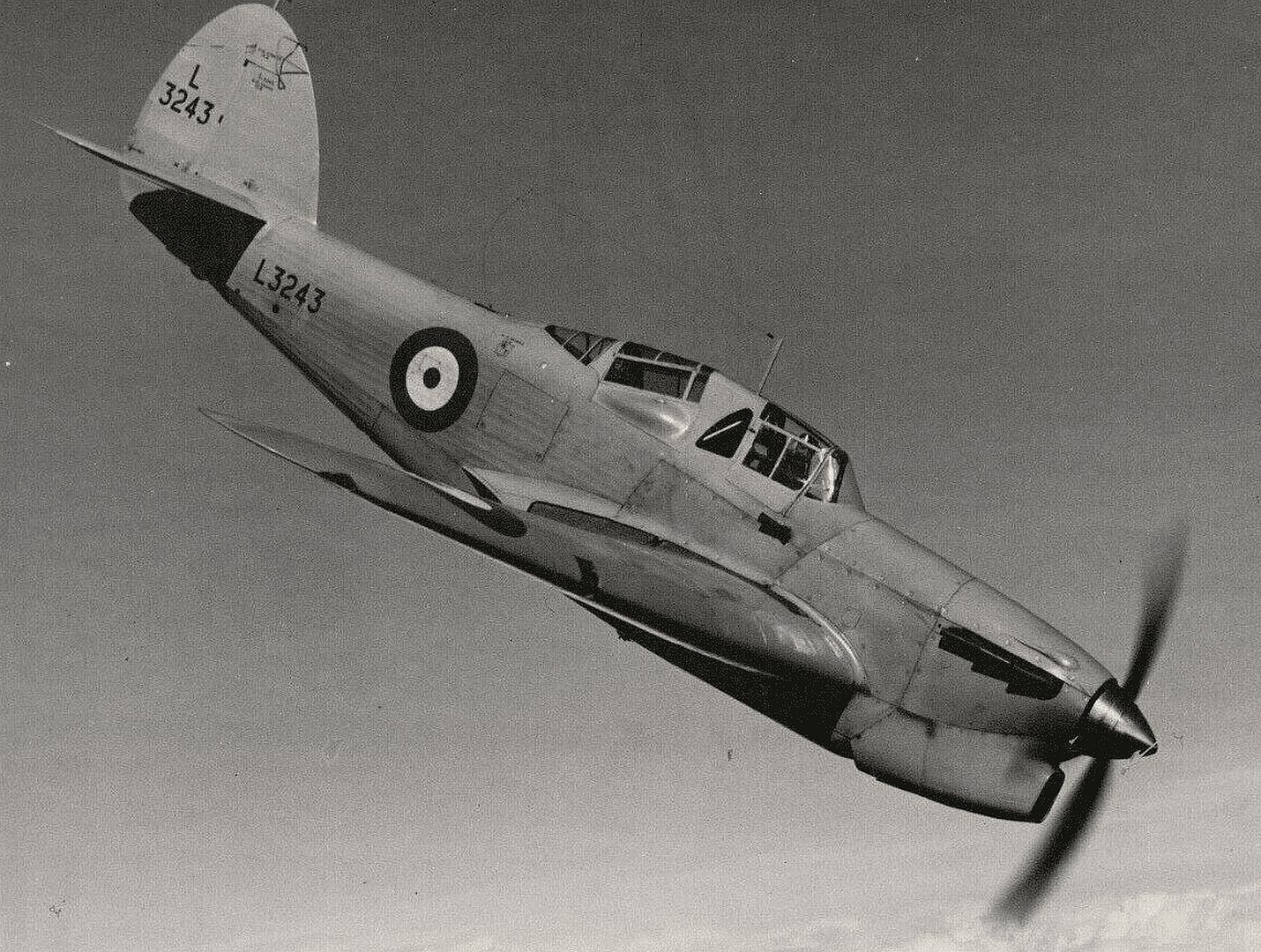
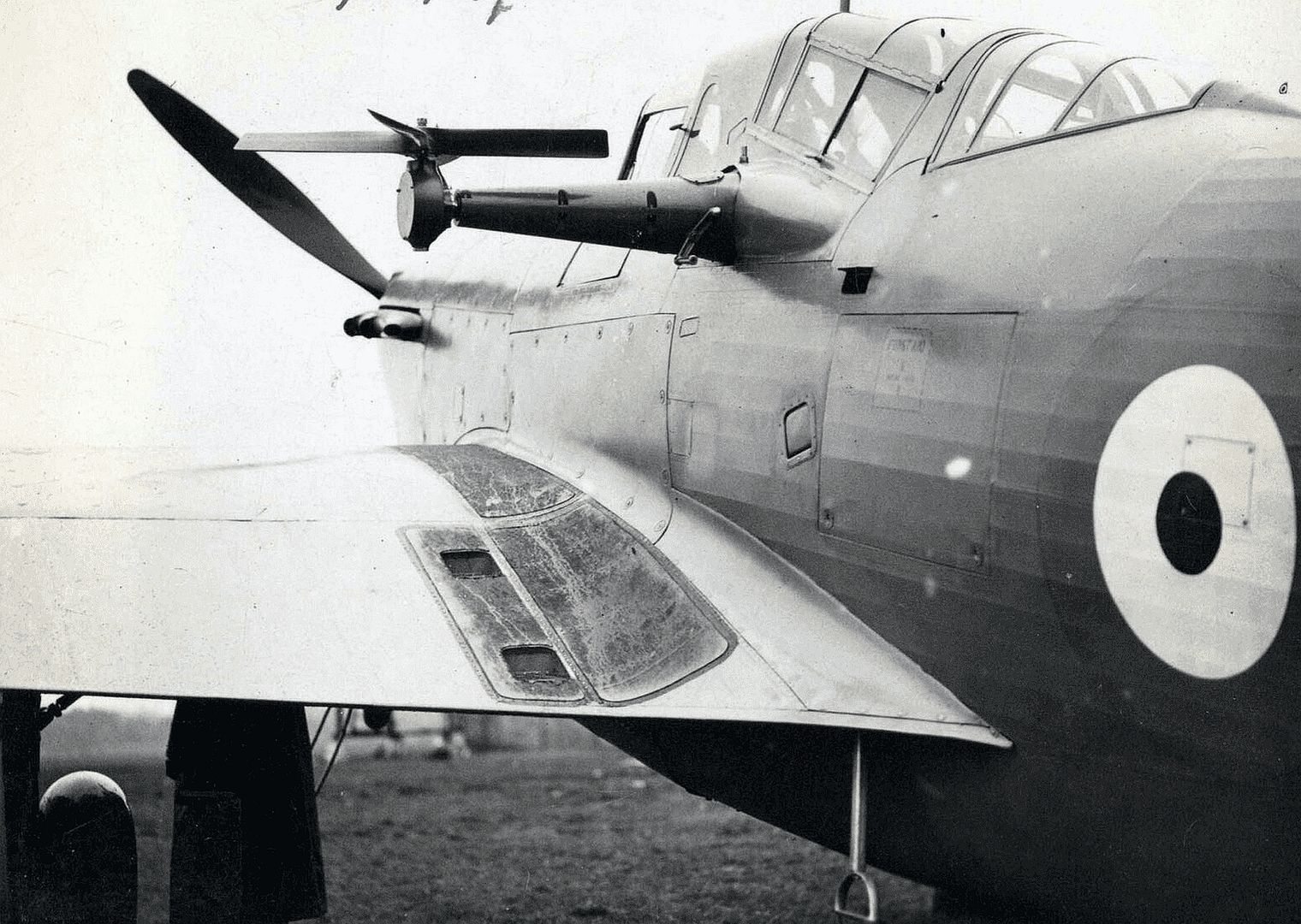

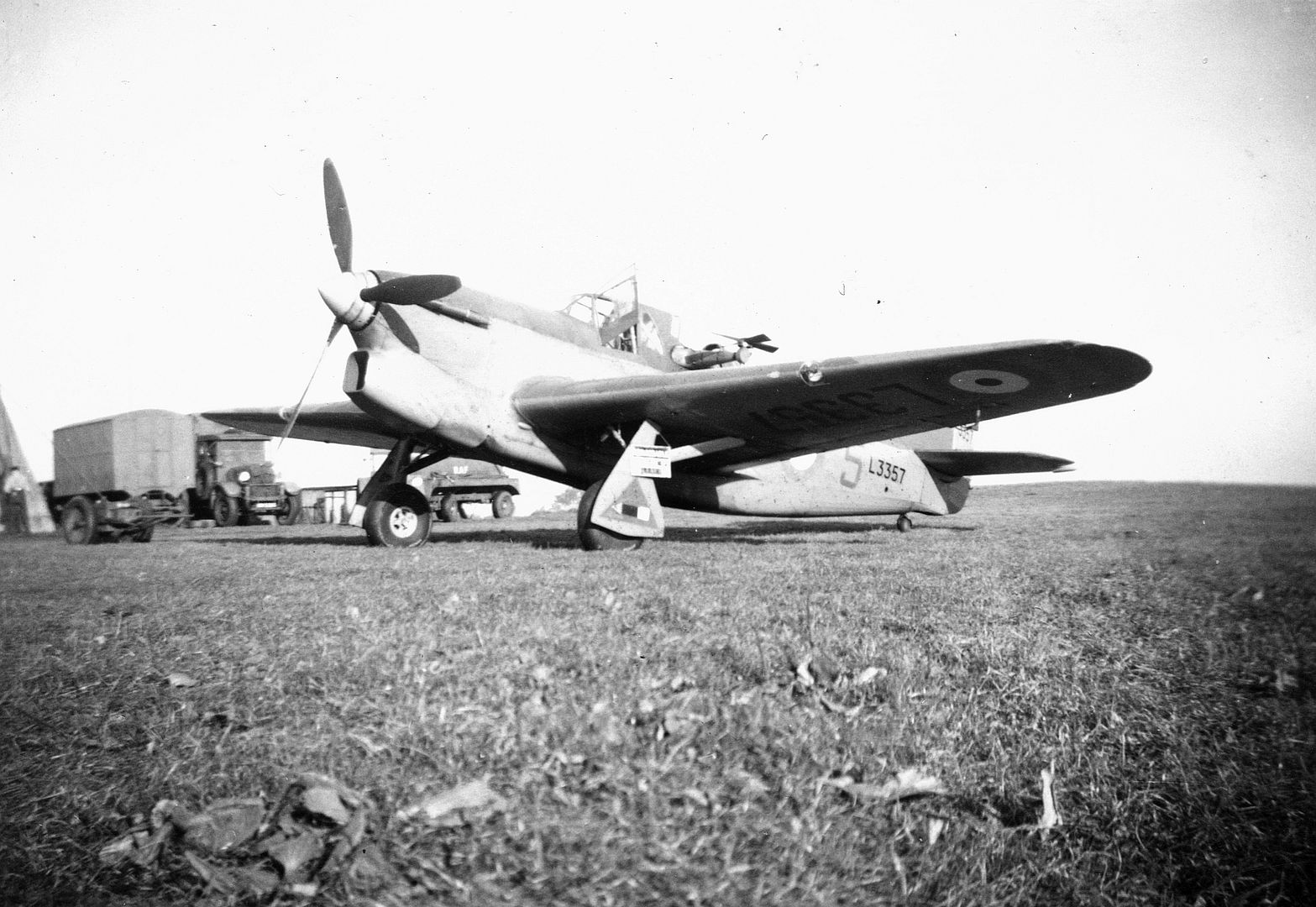

Specifications (Henley Mk III)
General characteristics
Crew: 2
Length: 36 ft 5 in (11.10 m)
Wingspan: 47 ft 10? in (14.59 m)
Height: 14 ft 7? in (4.46 m)
Wing area: 342 ft2 (31.77 m2)
Empty weight: 6,010 lb (2,726 kg)
Max. takeoff weight: 8,840 lb (3,846 kg)
Powerplant: 1 ? Rolls-Royce Merlin II inline piston engine, 1,030 hp (768 kW)
Performance
Maximum speed: (with drogue) 272 mph at 17,500 ft (438 km/h at 5,300 m)
Cruise speed: 235 mph at 15,000 ft (378 km/h at 4,500 m)
Range: 950 mi (1,529 km)
Service ceiling: 27,000 ft (8,200 m)
Rate of climb: 1,150 ft/min (340 m/min)
Wing loading: 25.9 lb/ft2 (121 kg/m2)
Power/mass: 0.121 hp/lb (0.200 kW/kg)
Hawker Hotspur
Like the Henley, the new bomber-destroyer was to be of all-metal construction with fabric-covered rear fuselage and control surfaces. As well as the turret, the aircraft was to be armed with a single forward-firing machine-gun, synchronised to fire through the propeller arc.
Work began on the prototype Hotspur (as the type was named) at Hawker?s Canbury Park Road factory in Kingston during in 1937. However, completion of the prototype (K8309) was delayed until the following year, by which time its chief rival the Boulton Paul?s Defiant, had already flown.
With the selection of the Defiant for production, the original plans for Avro to build the Hotspur were set aside and the project was abandoned after the production of the sole prototype.
However, the aircraft flew on 14th June 1938, fitted with a wooden mock-up turret. Later it was revealed that it attained a higher maximum speed in trials than its more successful rival.
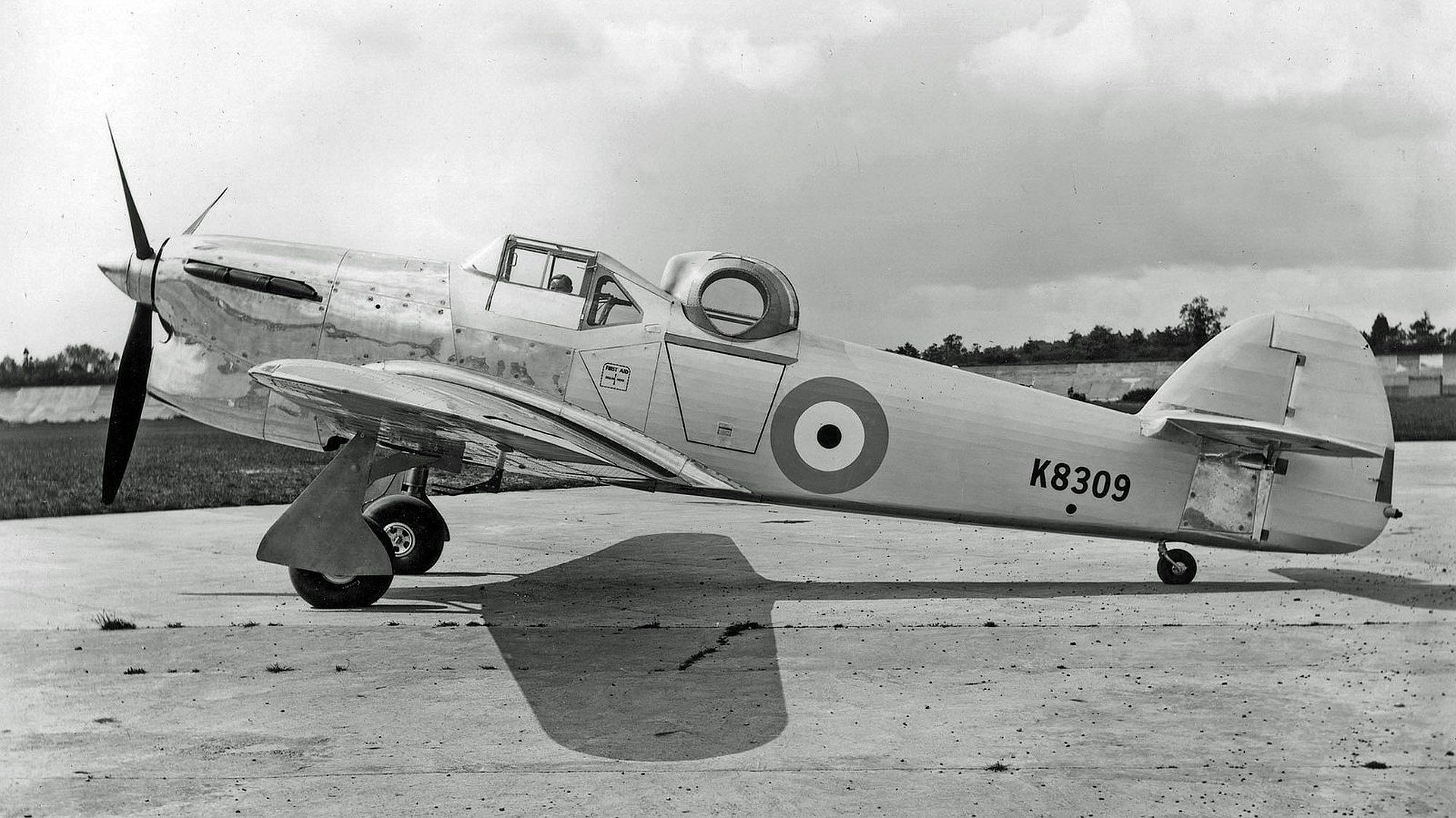
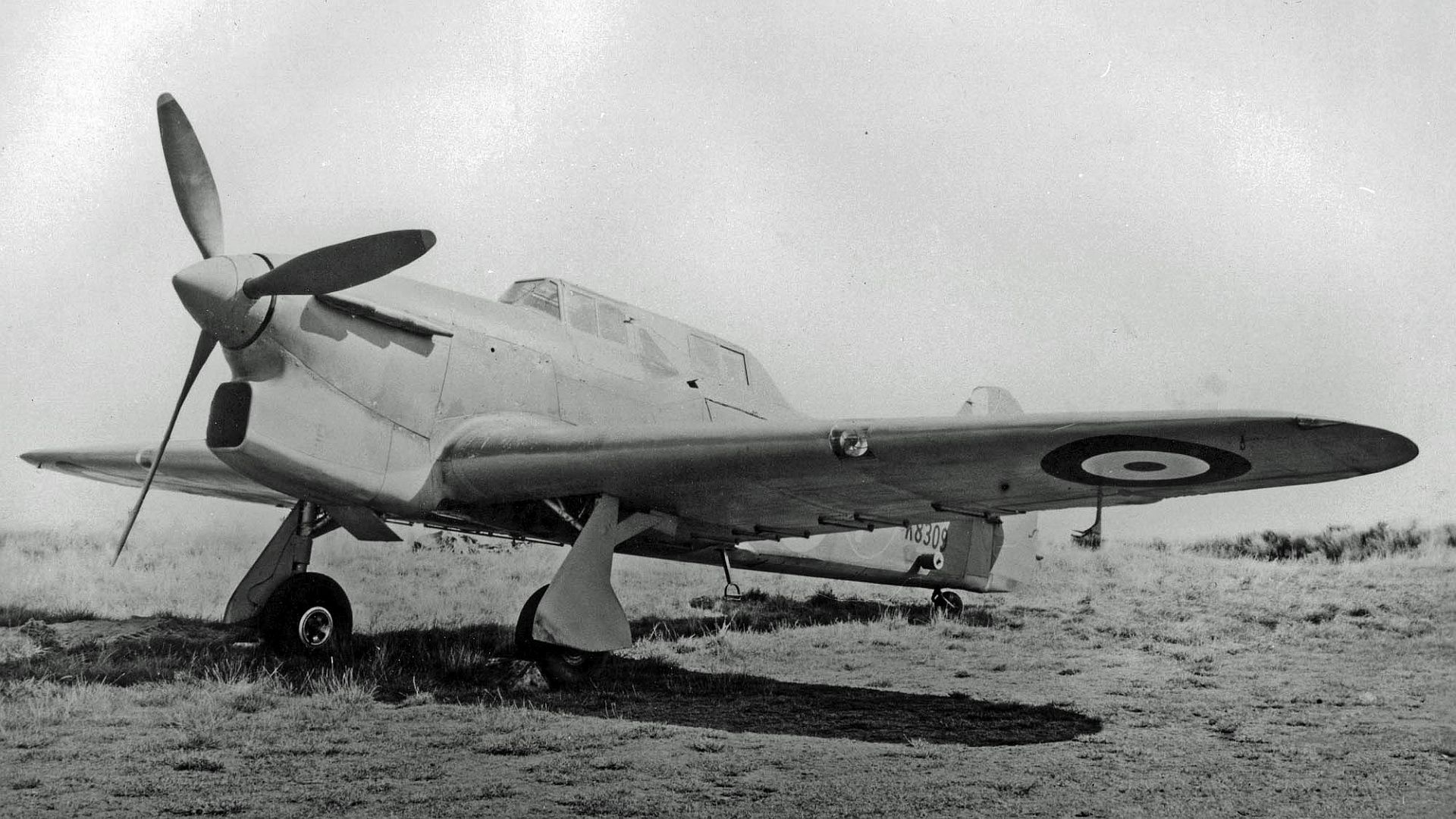
General characteristics
Crew: Two (pilot & gunner)
Length: 32 ft 10? in (10.02 m)
Wingspan: 40 ft 6 in (12.34 m)
Height: 13 ft 10 in (4.22 m)
Wing area: 342 ft? [6] (31.8 m?)
Empty weight: 5,800 lb (2,630 kg)
Max. takeoff weight: 7,650 lb (3,470 kg)
Powerplant: 1 ? Rolls-Royce Merlin II hp V-12 inline piston engine, 1,030 hp (768 kW)
Performance
Maximum speed: 275 kn (316 mph, 510 km/h)
Service ceiling: 28,000 ft (8,500 m)
Armament
4 ? .303 in (7.7 mm) Browning machine guns in a Boulton-Paul turret.
1 ? .303 in (7.7 mm) Vickers machine gun in nose.
Post a reply
- Go to Previous topic
- Go to Next topic
- Go to Welcome
- Go to Introduce Yourself
- Go to General Discussion
- Go to Screenshots, Images and Videos
- Go to Off topic
- Go to Works in Progress
- Go to Skinning Tips / Tutorials
- Go to Skin Requests
- Go to IJAAF Library
- Go to Luftwaffe Library
- Go to RAF Library
- Go to USAAF / USN Library
- Go to Misc Library
- Go to The Ops Room
- Go to Made in Germany
- Go to Campaigns and Missions
- Go to Works in Progress
- Go to Juri's Air-Raid Shelter
- Go to Campaigns and Missions
- Go to Works in Progress
- Go to Skinpacks
- Go to External Projects Discussion
- Go to Books & Resources
